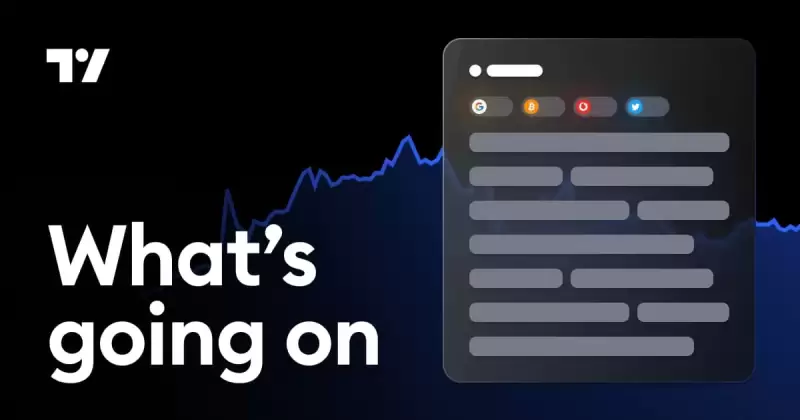 |
|
 |
|
 |
|
 |
|
 |
|
 |
|
 |
|
 |
|
 |
|
 |
|
 |
|
 |
|
 |
|
 |
|
 |
|
Cryptocurrency News Articles
Zcash Surges 10%, Monero Proves Steady—But BlockDAG's Beta Testnet Out-performs Both By Reaching 110K Wallets
Apr 02, 2025 at 01:00 am
Explore how Zcash bounces 10%, Monero holds firm, but BlockDAG steals the show with 110K+ wallets on its Beta Testnet

In the ever-evolving landscape of cryptocurrency, privacy has emerged as a paramount concern, and projects like Monero (XMR) and Zcash (ZEC) have become household names in the realm of anonymous and confidential transactions. However, as the industry shifts toward real-world scalability and long-term application, these privacy coins face increasing pressure to evolve and adapt.
Meanwhile, a new force is showing up: BlockDAG. Its “Primordial” Beta Testnet isn't just live—it's loaded with over 110,000 wallets, each one stress-testing smart contracts, token vesting, and transaction performance. It's a level of testing rarely seen, especially before a project's official launch.
Monero: Still the Gold Standard for On-Chain Privacy
Monero continues to be the go-to solution for on-chain privacy, using a trifecta of tech—RingCT, stealth addresses, and ring signatures—to keep every transaction confidential. For privacy maximalists, it's the most bulletproof way to keep activity invisible.
As of March 29, 2025, Monero is trading at $180, showcasing a 20% gain from its $150 price point one year ago. While it's not a moonshot, the consistent growth signals that Monero is holding its value in a market known for volatility. In a market full of rollercoaster price action, Monero's value lies in its stability and the trust it has built with users over the years.
While Monero's privacy features are well-known, its ability to maintain value and a loyal community in a rapidly changing crypto landscape is a testament to its resilience.
Zcash: Flexibility and Privacy, But Fighting for Market Share
Zcash offers a rare duality in crypto: users can choose transparent or shielded transactions, thanks to its powerful zk-SNARKs zero-knowledge proofs. This makes Zcash an attractive option for both privacy-focused users and institutions that require compliance-ready tools.
After reaching a local high of $79.91 in December 2024, ZEC dropped sharply to $25 by February 2025. However, on March 26, it made a notable comeback—rising 11.46% to $36.26 in a single day. That kind of bounce suggests there’s still strong market interest.
But while Zcash provides flexibility, its adoption curve remains slow, and users continue to question how well the platform can scale under real pressure. It’s respected tech—but it needs to show more momentum if it hopes to compete with newer, faster platforms.
BlockDAG Onboards Over 110,000 Wallets—Beta Testnet Simulates Real Economic Load
BlockDAG isn’t pitching promises—it’s testing reality. Its Beta Testnet, “Primordial,” has onboarded 110,000+ wallets into live vesting smart contracts, simulating the same token delivery process it will use during mainnet launch. This isn't a testnet built for show—it's one built to handle full-scale, real-world demand.
Each wallet receives 10,000 testnet tokens, with vesting scheduled across four releases: 40% instantly, and 20% weekly over the following three weeks. All of this is executed via a smart contract that users can monitor directly through BlockDAG's built-in Vesting dApp, allowing them to see exactly what's locked and what's liquid—without needing third-party tools or manual tracking.
This isn't just about distribution—it's about proving that smart contract logic can scale without breaking down under volume. By simulating hundreds of thousands of transactions, wallet interactions, and balance updates, BlockDAG is showing its infrastructure isn't just functional—it's future-proof.
And investors are clearly paying attention. The project has raised $210 million to date, sold over 19 billion BDAG coins, and is now in Batch 27, priced at $0.0248. That represents a staggering 2,380% ROI for early participants who bought in during the first presale round.
This kind of growth and network testing is rarely seen, especially before launch. BlockDAG is proving it's not just ready for real usage—it's built for it.
Legacy Privacy Coins Pause, BlockDAG Pushes Forward
Privacy without performance isn't enough anymore. Monero is trusted. Zcash is innovative. But BlockDAG is putting its entire framework through live-fire testing now—before it launches—so it can avoid scaling issues later.
With its GHOSTDAG architecture allowing parallel block validation and throughput over 2,000 transactions per second, BlockDAG is poised to do something
Disclaimer:info@kdj.com
The information provided is not trading advice. kdj.com does not assume any responsibility for any investments made based on the information provided in this article. Cryptocurrencies are highly volatile and it is highly recommended that you invest with caution after thorough research!
If you believe that the content used on this website infringes your copyright, please contact us immediately (info@kdj.com) and we will delete it promptly.
-

-

-
![EOS [EOS] is making waves in the market, rallying over 20% and leaving traders buzzing about its transformation into Vaulta. EOS [EOS] is making waves in the market, rallying over 20% and leaving traders buzzing about its transformation into Vaulta.](/assets/pc/images/moren/280_160.png)
- EOS [EOS] is making waves in the market, rallying over 20% and leaving traders buzzing about its transformation into Vaulta.
- Apr 03, 2025 at 06:25 am
- With staking yields poised to outshine Ethereum[ETH] and Solana[SOL] and derivatives traders betting big on more upside, EOS is shedding its stagnant past and stepping into the spotlight.
-

- A Prominent Stablecoin Depegged from the US Dollar Wednesday Morning After It Was Alleged That Its Hong Kong-Based Issuer Was Bankrupt
- Apr 03, 2025 at 06:25 am
- In a new thread on the social media platform X, crypto billionaire and Tron (TRX) founder Justin Sun urged his followers to “take immediate action” to protect any assets they held in FDUSD
-

- Fidelity Investments Launches New IRA Product That Allows Investors to Directly Purchase Bitcoin (BTC), Ethereum (ETH), and Litecoin (LTC)
- Apr 03, 2025 at 06:20 am
- Fidelity Investments has introduced a new Individual Retirement Account (IRA) product that allows U.S. investors to directly invest in cryptocurrencies
-

-

- The recent surge of Fartcoin has captivated the cryptocurrency market, raising questions about the growing influence of artificial intelligence in trading.
- Apr 03, 2025 at 06:15 am
- Initially perceived as just another meme coin, $FARTCOIN skyrocketed to a $2 billion market cap, driven not only by internet hype but also by AI-driven trading signals.
-

- Ethereum (ETH) Whale Makes Waves by Dumping Dogecoin and Reallocating into Lesser-known Meme Coin Panshibi (SHIBI)
- Apr 03, 2025 at 06:15 am
- A major Ethereum whale has just made waves by pulling out of Dogecoin and reallocating into lesser-known meme coin Panshibi (SHIBI), raising eyebrows across the crypto market.
-
























































![EOS [EOS] is making waves in the market, rallying over 20% and leaving traders buzzing about its transformation into Vaulta. EOS [EOS] is making waves in the market, rallying over 20% and leaving traders buzzing about its transformation into Vaulta.](/uploads/2025/04/03/cryptocurrencies-news/articles/eos-eos-waves-market-rallying-leaving-traders-buzzing-transformation-vaulta/middle_800_480.webp)




